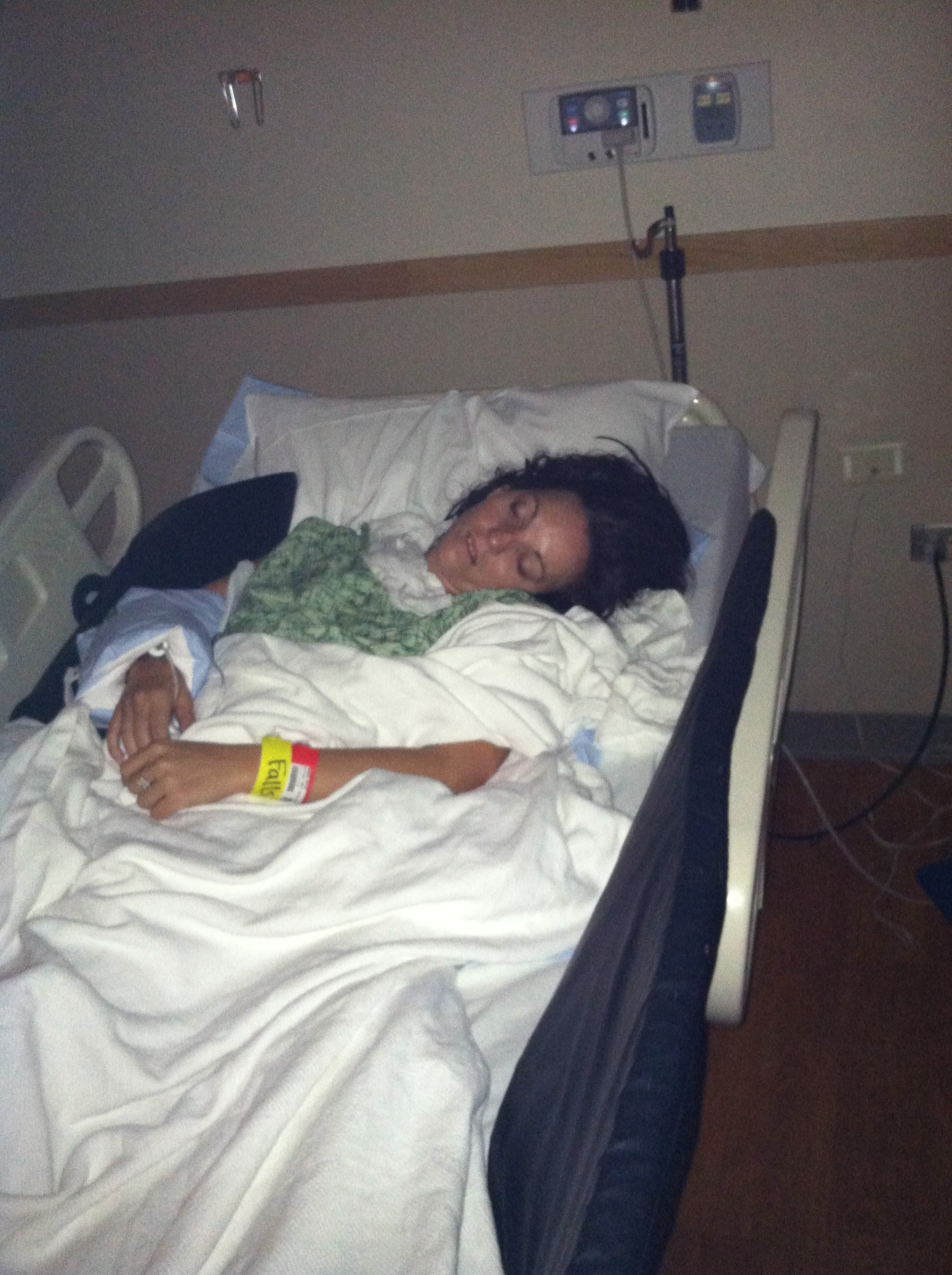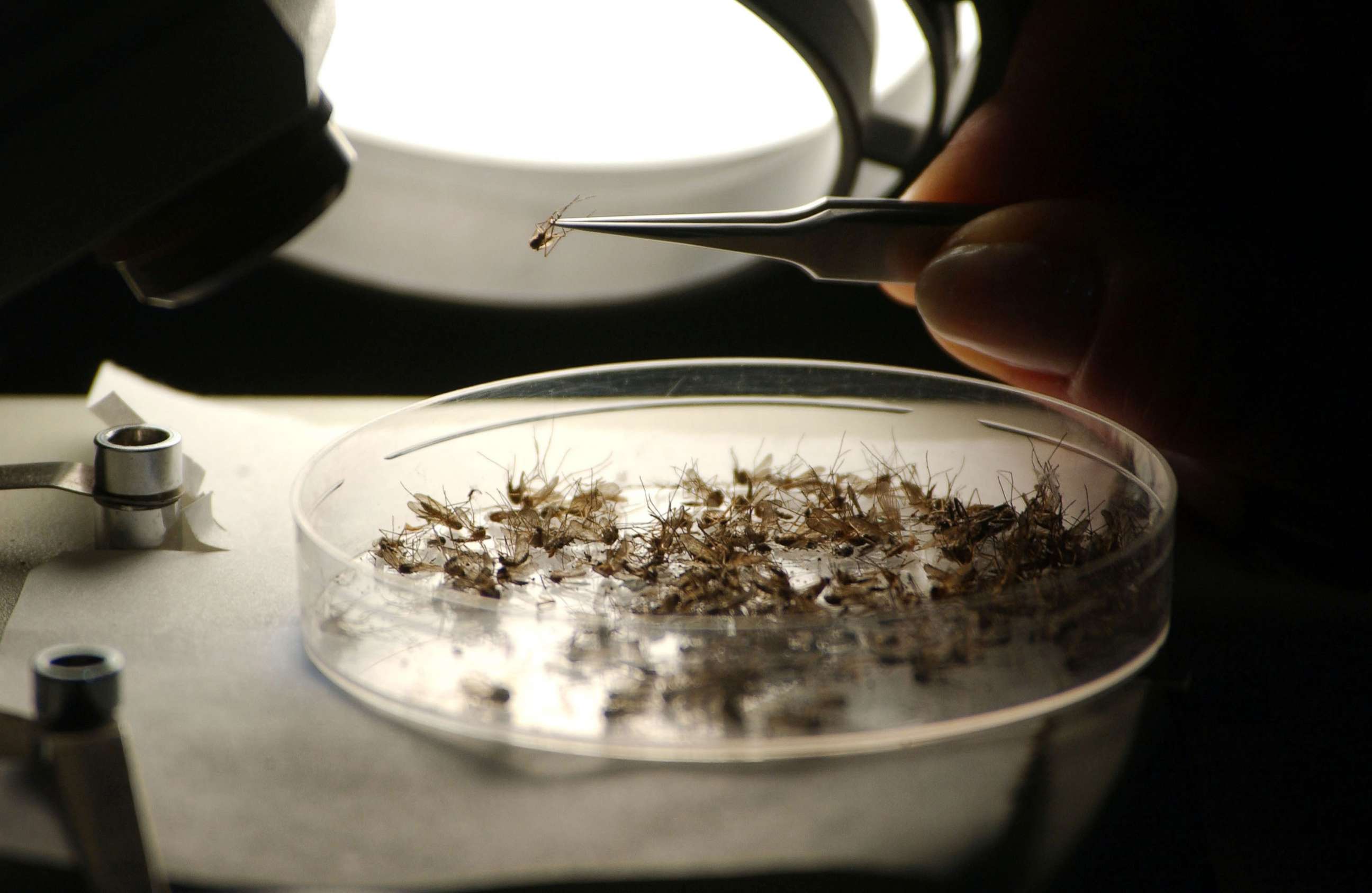'They told me my brain was mush': EEE virus survivor's harrowing ordeal
Death and permanent health problems drive fear about the mosquito-borne disease.
Kaylee Hardenbrook is one of the fortunate ones. Five years ago, the 31-year-old mother of two went to the emergency room with flu-like symptoms. Doctors sent her home, and her symptoms worsened. Within days, Hardenbrook suffered a seizure and went into a coma.
When she awoke, doctors told her to make arrangements to say goodbye to her children. "They said my brain was mush, basically," Hardenbrook said.
The culprit, it turned out, was a rare mosquito-transmitted virus called Eastern equine encephalitis (EEE), which crops up every year in clusters along the Eastern Seaboard, Great Lakes and Gulf Coast regions.
Hardenbrook, who is from Paw Paw, Michigan, which abuts one of the state's many lakes, had never heard of EEE prior to being diagnosed with it.
"It wasn't talked about in my area," she said.

That's starting to change. While EEE virus typically infects about seven people annually, there have been 28 cases recorded so far this year, including 10 cases in Massachusetts and eight in Michigan, according to the Centers for Disease Control and Prevention. Nine people have died.
Those numbers make 2019 the worst year for EEE in decades -- the CDC didn't start tracking the disease until the early 1960s -- with a previous peak of 21 cases in 2005.
Marc Fischer, an epidemiologist in the CDC's arboviral disease branch, stressed that it's premature to say that the threat of EEE in the United States is growing.
EEE occurs cyclically in affected regions, with two to three years of intensive activity, followed by a prolonged period of subsiding infections.
"This is typical," he said of the fluctuation in cases from year to year. "It is just a single high year. There's no evidence that we're seeing a longer-term trend."
Compared to other mosquito-transmitted diseases, like West Nile disease, EEE is incredibly rare. As of late September, there were 543 cases of West Nile disease reported to the CDC in 2019.
That's not to say EEE isn't concerning. While uncommon, it's among the most fatal mosquito-borne infections in the U.S. "It's a serious disease," Fischer said.
The virus infects many people, but according to the CDC only 5% of those bitten by infected mosquitoes develop any symptoms, which can include flu-like indicators (fever, chills, body aches) all the way up to severe neurological conditions from brain swelling (Encephalitis). Of the small subset of people who develop brain swelling there is a 30% risk of death. Among those who survive, many will continue experiencing neurological problems, such as seizures, intellectual impairment and personality disorders.

Hardenbrook was among that unfortunate 5%. She told ABC News she developed meningitis and was temporarily paralyzed. She had to relearn to walk and to use the bathroom. But today, other than minimal memory loss, she's feeling much better.
"I want to let people know that there's still hope," she said about coming back from EEE against the odds. "I'm very lucky."
Part of the fervor surrounding EEE could be the combination of high fatality rates and the severe and permanent health problems many survivors sustain. In comparison, West Nile mostly affects people who are older than 60, explained Scott Weaver, a virologist at the University of Texas Medical Branch.
"I think these factors have an emotional impact and cause greater fear," Weaver said.
There is no preventative human vaccine against EEE Virus infection and no antiviral treatment once it's acquired. Medical teams can only offer supportive care to help minimize the symptoms.
What's causing this year's record EEE cases
The reasons behind this year's uptick are complex and still unknown.
EEE naturally occurs in birds living in freshwater swamps that support large mosquito populations. Insects feed on those animals, become infected and later transmit the virus to susceptible human hosts during subsequent blood meals.
Changes in bird and mosquito populations, weather factors like warmer, wetter conditions and human behavior, like spending time outdoors without mosquito protection, all play a role in infection levels. Increased surveillance and diagnosis can contribute to an uptick of confirmed EEE cases, too. If more people are aware of a disease threat in a given year, they're more likely to get tested and diagnosed, Fischer explained.
This year's spike in infections also prompted researchers to question whether the virus is evolving and becoming more dangerous.
Catherine Brown and her team at the Massachusetts Bureau of Infectious Disease and Laboratory Sciences genetically analyzed two decades of EEE virus data. The researchers found that the virus evolved in Florida, which could lead to new and potentially stronger strains in the Northeast.
Edward Walker, a professor at Michigan State University in the Department of Entomology, attributes increased EEE cases to older mosquitoes. As mosquitoes age, the likelihood of acquiring an infection from a diseased animal and transmitting that infection to humans increases, because those mosquitoes have taken more blood meals throughout their lifespans.
Waiting for the first big frost
The good news for states like Michigan and Massachusetts, which have shouldered the brunt of this year's EEE cases, is that the virus's seasonal window for transmission is coming to a close.
"As we move into fall and temperatures cool down, we expect the number of human cases to decrease," Fischer said.
Weaver noted that the first hard freeze, typically around mid-October in the Northeast, tends to kill off a good portion of the adult mosquito population.
Until then, health officials recommend removing any standing water around the home, wearing long sleeves, using mosquito repellent registered with the EPA (like Deet Picaridin and Oil of lemon eucalyptus) and limiting time spent outdoors after dusk.

Since EEE tends to affect specific areas, it's more important for people in those states and regions to heed the recommendations than it is for those outside the traditional disease zone. In Michigan and in Connecticut, where two people have died of EEE this year, schools are adjusting outdoor sports schedules to avoid exposing players to mosquitoes at dusk.
Hardenbrook's husband, who is an avid hunter, always takes mosquito protection precautions when he's in the woods these days. But for the last couple of years, he hasn't gone out on opening day at all.
"It's been so warm," Hardenbrook explained.
In addition to protecting against mosquito bites, Walker is in favor of mosquito control efforts, including aerial spraying in areas where EEE positive mosquitoes have been detected. Several affected areas across the Northeast have now increased the practice of spraying.
Experts are split on whether climate change is making things worse
While the virus is difficult to study because of its sporadic nature, Theodore Andreadis, director of the Connecticut Agricultural Experiment Station and head of the Center for Vector Biology & Zoonotic Diseases, believes that climate change could be tied to increasing EEE occurrence.
He notes that climate ecological models project longer summers and milder winters, which can lead to overwintering, which is when a mosquito survives the winter, allowing the virus to survive, too.
"Until 2003, cases in the Northeast had been very sporadic," Andreadis said. "Now, we have been seeing more recent outbreaks in regions where EEE has not been detected before. We do know that the virus persists for a couple of years and the strain fades out."
Extreme weather such as heavy rainfall and damp conditions can create ideal breeding habitats supportive of larger mosquito populations. More mosquitoes mean additional chances for the insects to acquire EEE and transmit the disease more quickly.
Fischer, the CDC epidemiologist, said there was no way to link climate change to this year's disease spike.
"I'd associate it more with weather patterns," he said, noting that weather patterns can change over time. Long-term changes in those patterns could potentially be a concern, Fischer said.




